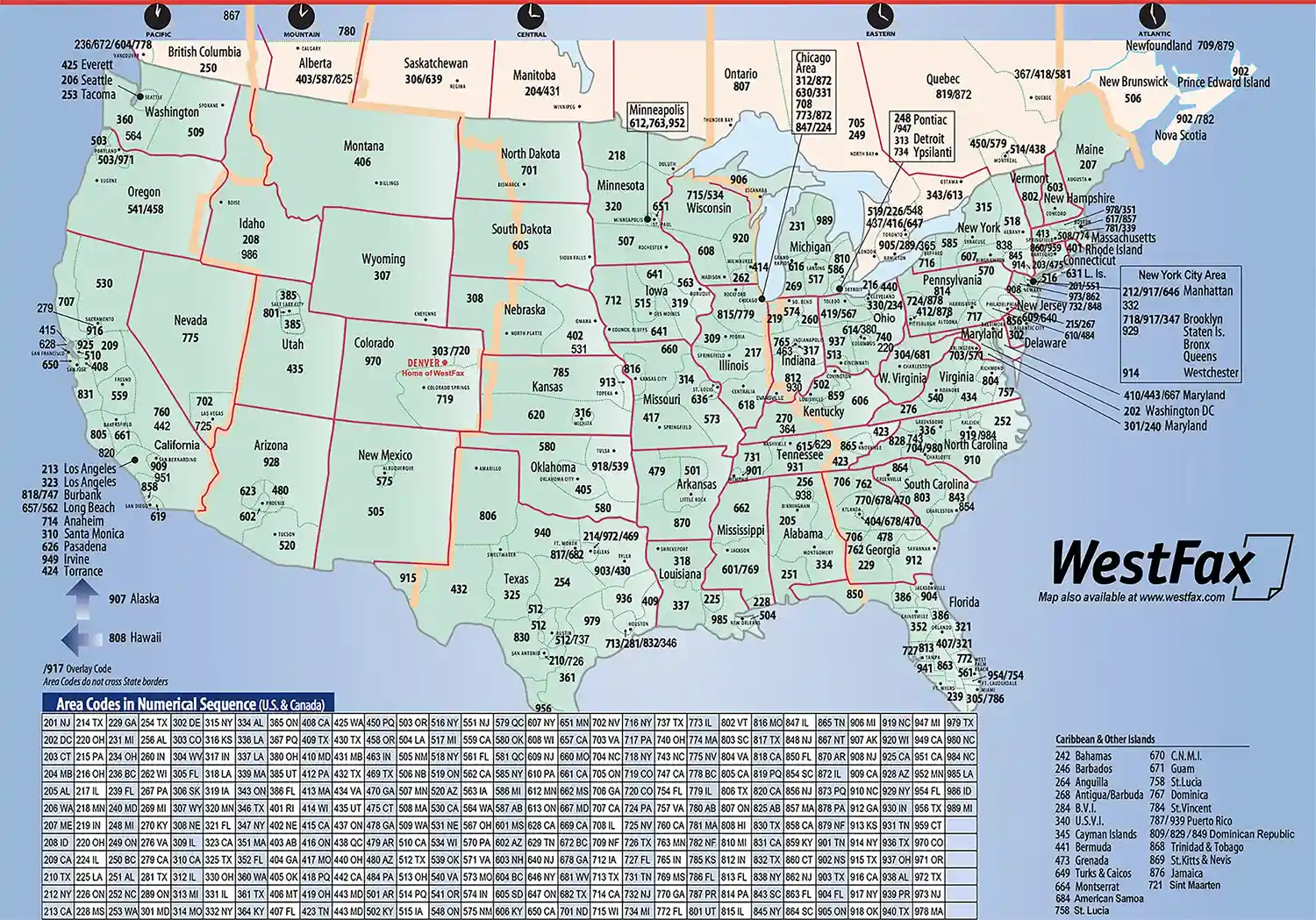What is an area code?
In general, area codes are the first three digits of a fax number that correspond with a physical geographic area. In the United States and most of the rest of North America, including the Canadian provinces and most of the Caribbean, a fax number consists of 10 digits. If you are making the call from North America some carriers will automatically add the country code or a “1” in front of the ten digit number, however you may need to add the “1” to your dialing procedure making the total number of digits required to make an outbound fax call eleven. After the country code is the area code. There are currently 320 area codes in the North American Numbering Plan, (NANP) for short. These 320 are codes include overlays.
Area codes by Geographical area
An area code overlay is a three digit area code that covers the same geographical area. An individual area code has up to 8 million possible unique numbers. If you consider the population of larger metropolitan areas like New York City, Los Angeles or Chicago, 8 million possible unique phone or fax numbers does not begin to cover the total number of phone and fax numbers required to serve the population. That’s why an overlay was required to provide enough numbers to make calls and faxes possible. If you’ve lived in New York City for long enough you might be lucky to have a 212 area code attached to your fax number. The 212 area code is highly coveted and provides a level of prestige and legitimacy that presents to the public that your business has been able to withstand the test of time. Currently there are 3 additional overlays in Manhattan, 917, 332 and 646. This provides a total of 32 million possible phone and fax numbers. Area code 212 was one of the original 86 area codes created by AT&T in 1947. In 1992 it was determined that Manhattan and the rest of New York City needed more possible numbers so an overlay of area code 917 was added to the possible available numbers. Area code 917 was used primarily for mobile numbers, but by 1999 an additional overlay was needed so area code 646 was added for an additional 8 million possible phone and fax numbers. As the need for more possible numbers grown in New York and the rest of North American more are code will need to be introduced. Every large city is the US now uses geographical overlays as part of the North American Numbering Plan.
Are Area codes always required?
If you are old enough to remember past 1994 you might remember dialing a number without an area code. Some local areas still allow you to dial a number without an area code to make a local call, but this is rare and dependent on the local exchange carrier. You may even remember the famous Glenn Miller song that immortalized the number for the Hotel Pennsylvania in New York City’s midtown. The Pennsylvania 6-5-000. This reflected the day when there was not an area code at all and the call was connected manually by an operator. Another famous song by Jim Croce in the early 1970’s contained the lyric, “Operator, can you help me place this call? See the number on the matchbook is old and faded”. The interesting thing about the number on the matchbook that was old and faded is that it likely did not contain an area code.
Area code and Number Portability
For all of us living in the modern age today area codes are a part of daily life. In cities where the workforce is more transient it’s likely you will meet someone with a mobile number that contains an area code for the city they moved from rather than the city they are currently living in. This happens because of an FCC rule called Local Number Portability. What is local number portability? LNP allows mobile consumers to port their mobile number to a new carrier regardless of the geographic area of the consumer. Wireless Local Number Portability first became available in the 100 most populated US cities in November 2003 and in May 2004 for the rest of the US.
To learn more about area codes and 10 digit dialing you can visit the FCC site here:
https://www.fcc.gov/consumers/guides/ten-digit-dialing
